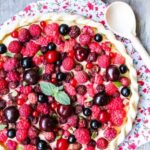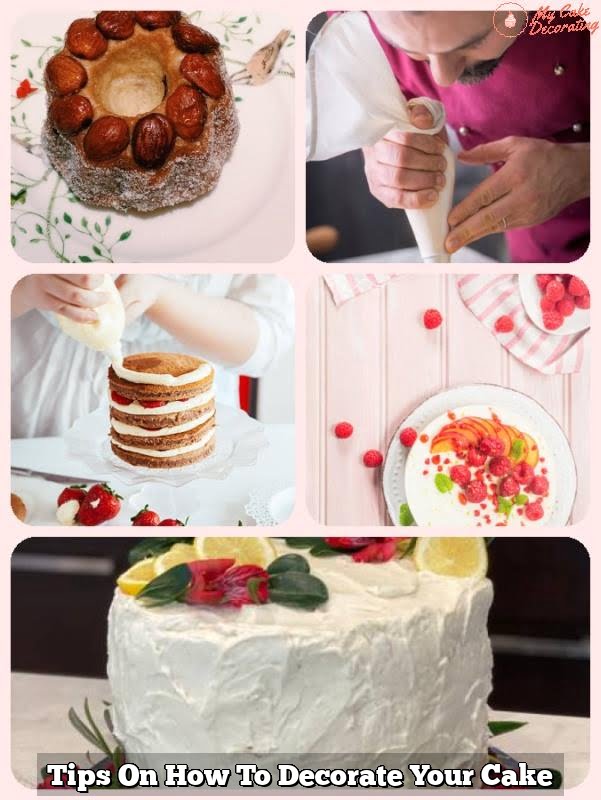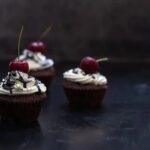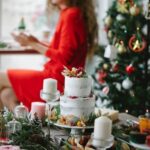Are you interested in learning how to decorate a cake without tips? Cake decorating is not only a way to make your desserts visually appealing, but it also allows for creativity and personalization.
While traditional piping tips are commonly used in cake decorating, there are alternative methods that can achieve the same beautiful results. In this article, we will explore the different techniques for decorating a cake without using tips, providing step-by-step guides and creative ideas to help you elevate your baking skills.
Decorating a cake is an essential skill for bakers and home cooks alike. Whether you’re preparing a birthday cake, wedding cake, or simply want to impress your friends and family with a stunning dessert, knowing how to decorate a cake can take your creations to the next level. From spreading frosting evenly to creating intricate designs, there are various techniques that can be used to achieve professional-looking results without the need for traditional piping tips.
In this article, we will discuss the importance of cake decorating and its role in creating visually appealing and delicious desserts. We will also delve into the different techniques used in cake decorating, including both traditional methods using tips and alternative approaches that do not require specialized tools.
By the end of this article, you’ll have all the knowledge and inspiration you need to start decorating cakes without the use of tips, allowing you to unleash your creativity and produce stunning confections at home.
Tools and Materials
When it comes to decorating a cake without using tips, there are several essential tools and materials that you will need to achieve professional-looking results. While traditional piping tips are not used in this method, there are alternative items that can be substituted to create beautiful designs on your cake. By having the right tools and materials at your disposal, you can explore creative ways to decorate cakes without the need for specialized equipment.
Essential Tools and Materials
Some of the essential tools and materials needed for cake decorating without using tips include offset spatulas for spreading frosting, bench scrapers for smoothing surfaces, and icing combs for creating texture. Additionally, a turntable is extremely useful for rotating the cake while decorating, as it allows for even application of frosting and smooth finishing. For those who want to experiment with different piping techniques, reusable or disposable plastic bags can be used in place of traditional piping bags.
Alternative Items for Decorating
In the absence of regular piping tips, there are several alternative items that can be repurposed for decorating cakes. For example, toothpicks or wooden skewers can be used to create simple lines or patterns in the frosting. In some cases, cut-up straws or cookie cutters can act as makeshift stencils for shaping decorative elements on the cake’s surface. Being resourceful with everyday items opens up a world of possibilities when it comes to cake decoration without traditional tips.
By being equipped with these essential tools and materials, as well as knowing how to improvise with alternative items, you will have everything you need to get started with decorating your cakes without relying on traditional tips. With some creativity and practice, you can achieve stunning results while exploring various techniques and designs.
Preparing the Cake
Before you can start decorating your cake, it’s essential to prepare the cake itself to ensure a smooth and professional-looking finish. One of the first steps in preparing a cake for decorating is leveling it. This involves removing any domed or uneven portions from the top of the cake to create a flat surface. You can use a long serrated knife or a cake leveler for this process, cutting off any excess cake until it is completely level.
Once your cake is leveled, the next step is crumb coating. Crumb coating helps seal in any loose crumbs on the surface of the cake and creates a smooth base for your frosting. To crumb coat a cake, apply a thin layer of frosting all over the cake, making sure to cover any exposed areas. Then, chill the cake in the refrigerator for about 15-20 minutes to allow the crumb coat to set before applying additional frosting.
Properly preparing your cake before decorating can make a significant difference in the final outcome. It ensures that your frosting adheres smoothly to the surface and helps prevent any unsightly crumbs from showing through. By taking the time to level and crumb coat your cakes, you’ll create a professional finish that provides an excellent foundation for your decorative techniques.
| Preparing Tools | Frosting Technique |
|---|---|
| Long serrated knife or cake leveler | Crumb Coat Application |
| Cake board or turntable | Chilling Process |
Frosting Techniques
When it comes to decorating a cake without using tips, mastering frosting techniques is essential. Whether you’re a beginner or simply prefer a more rustic and homemade look to your cakes, learning how to apply frosting without traditional piping tips can open up a world of creative possibilities. In this section, we will provide you with a step-by-step guide on how to achieve beautifully frosted cakes without the need for specialized tools.
First, it’s important to start with a cake that is properly prepared for frosting. Make sure that your cake layers are level and free from any crumbs by using a serrated knife and a rotating cake stand for even cutting. Additionally, applying a thin layer of crumb coat frosting will help seal in any loose crumbs and create a smooth base for your final frosting layer.
Once your cake is prepped and ready, spreading the frosting evenly over the top and sides is crucial. An offset spatula can be used to achieve smooth and even coverage, working from the top of the cake down the sides. To prevent any uneven bumps or air bubbles in the frosting, make sure to work patiently and carefully around the entire cake.
After applying an initial layer of frosting, smoothing out the surface is the next step. There are various techniques you can use to create a polished finish without using tips, such as using a bench scraper or even a piece of parchment paper. With some practice and attention to detail, you can achieve professional-looking results that highlight the natural beauty of your homemade cakes.
| Frosting Technique | Description |
|---|---|
| Spreading | Using an offset spatula for even coverage |
| Smoothing | Techniques such as using bench scraper or parchment paper |
Piping Without Tips
Plastic Bag Technique
One of the easiest and most accessible ways to pipe frosting onto a cake without traditional tips is by using a plastic bag. To do this, simply spoon the frosting into a sturdy, resealable plastic bag and push it all towards one bottom corner.
Then, snip off a small portion of that corner with scissors to create a makeshift piping bag. This method allows for more control over the frosting flow and can be used to create a variety of designs and textures.
Homemade Piping Bags
If you don’t have plastic bags on hand, you can also make your own piping bags using parchment paper. Start by cutting a square or triangle piece of parchment paper, then roll it into a cone shape, making sure there are no gaps along the seams.
Use tape or staples to secure the cone shape and trim off the excess parchment paper at the tip according to your desired thickness for piping. This DIY piping bag can be used in the same way as regular ones and is a great alternative if you don’t have access to commercial piping tools.
Tips for Success
Regardless of which method you choose, it’s important to keep in mind some essential tips for successful piping without traditional tips. Make sure to apply even pressure when squeezing out the frosting from the bag, as this will help maintain consistent lines and shapes.
Practice different techniques on a piece of wax paper beforehand so that you can get comfortable with handling the makeshift piping tools before moving on to decorating the actual cake. With a bit of patience and creativity, you can achieve beautiful results without relying on traditional piping tips.
Texture and Design Ideas
When decorating a cake without traditional piping tips, there are still plenty of creative ways to add texture and design to your creation. One popular technique is creating ruffles on the cake’s surface. To achieve this look, simply use a spatula or offset spatula to create small, upward strokes in the frosting, repeating the motion in a uniform pattern around the cake. This will result in delicate ruffled accents that add a touch of elegance to your dessert.
Another classic design that can be achieved without using tips is the wave pattern. With a steady hand and a flat icing smoother, gently press and pull the frosting in a wavy motion around the sides of the cake. This technique creates a visually pleasing undulating effect that can be accentuated with different colors of frosting for added visual interest.
For those looking to add a whimsical touch to their cake, incorporating swirls into the design can be an excellent choice. Using either an offset spatula or even just the back of a spoon, create swirling patterns in the frosting by making circular motions. Swirls can be applied sparingly for a subtle effect or used more liberally across the entire surface for a bolder statement.
By experimenting with these various texture and design ideas, decorators can elevate their cakes without needing traditional piping tips. Whether aiming for an elegant ruffled look, gentle waves, or playful swirl patterns, there are endless possibilities for creating visually stunning cakes using alternative techniques for decorating.
Adding Decorations
After successfully frosting and piping your cake without traditional tips, the next step is to add some extra flair with creative decorations. Whether you’re celebrating a birthday, anniversary, or any special occasion, adding embellishments to your cake can take it to the next level. Here are some tips on how to embellish your cake with additional decorations.
One of the simplest ways to decorate a cake is by using colorful sprinkles. Sprinkles come in a variety of shapes and sizes, adding a fun and playful touch to your creation. You can sprinkle them over the entire surface of the cake for a festive look, or create patterns and designs using different colors.
If you want to add an elegant touch to your cake, consider using edible flowers as decoration. Flowers such as roses, pansies, and violets are not only beautiful but also safe for consumption. Simply place them strategically around the cake or create a cascading effect down the sides for a stunning presentation.
For those who love chocolate, chocolate shavings or curls can be used to adorn your cake. Using a vegetable peeler or cheese grater, you can create delicate chocolate shavings from a block of chocolate and gently press them onto the frosting. This adds a rich and indulgent element to your cake that is sure to impress your guests.
Troubleshooting
When decorating a cake without traditional piping tips, there are some common issues that may arise during the process. It’s important to be prepared for these challenges and know how to troubleshoot them effectively. Here are some of the most common issues that you may encounter when decorating a cake without tips and how to fix them:
1. Uneven Frosting: One of the most common issues when decorating a cake without tips is achieving an even layer of frosting. To fix this problem, start by using an offset spatula to gently spread the frosting across the cake. Then, use a bench scraper or straight-edge tool to smooth out any uneven areas. Repeat this process until you achieve a smooth and level surface.
2. Piping Mistakes: When piping frosting onto a cake without traditional tips, it’s possible to make mistakes such as inconsistent lines or messy designs. To fix piping mistakes, simply use a small offset spatula or toothpick to carefully smooth out any uneven areas or reshape any misaligned lines. If necessary, you can also add additional frosting on top to cover up any errors.
3. Air Bubbles in Frosting: Another issue that may arise when decorating a cake without tips is the presence of air bubbles in the frosting. To remove air bubbles, gently tap the sides of the cake with your hand or use a toothpick to release any trapped air. You can also use a small offset spatula to smooth out any bumpy areas caused by air bubbles.
By being aware of these common issues and knowing how to troubleshoot them effectively, you can confidently decorate a cake without tips and achieve professional-looking results. Don’t let these challenges discourage you – with some patience and practice, you can master the art of decorating cakes using alternative techniques and tools.
Conclusion
In conclusion, decorating a cake without using traditional tips offers a unique and versatile approach to cake decorating. By utilizing alternative tools and techniques, individuals can explore their creativity and achieve stunning results. From spreading and smoothing frosting to piping without tips using plastic bags or homemade piping bags, there are numerous ways to create beautiful designs and textures on a cake.
It’s important to remember that experimenting with different methods of cake decorating can lead to unexpected but delightful outcomes. Whether it’s incorporating ruffles, waves, or swirls for texture and design, or adding additional decorations such as sprinkles, edible flowers, or chocolate shavings, the possibilities are endless when decorating a cake without tips. This approach not only encourages creativity but also allows for a more personalized touch when expressing one’s artistic flair.
Overall, the process of decorating a cake without tips may present some challenges, but it also provides an opportunity for problem-solving and innovation. As readers venture into this unconventional method of cake decoration, it is the perfect time to embrace creativity with an open mind.
With practice and patience, mastering the art of decorating a cake without tips can lead to impressive and visually appealing results that showcase individuality and skill. So go ahead and give it a try – you might just discover newfound confidence in your ability to create stunning cakes.

Welcome to my blog about home and family. This blog is a place where I will share my thoughts, ideas, and experiences related to these important topics. I am a stay-at-home mom with two young children. I hope you enjoy reading it! and may find some helpful tips and ideas that will make your home and family life even better!





